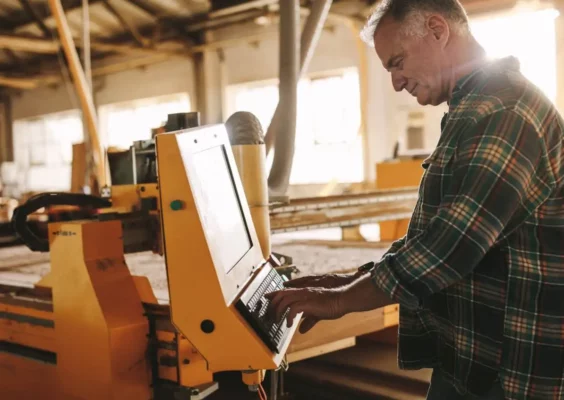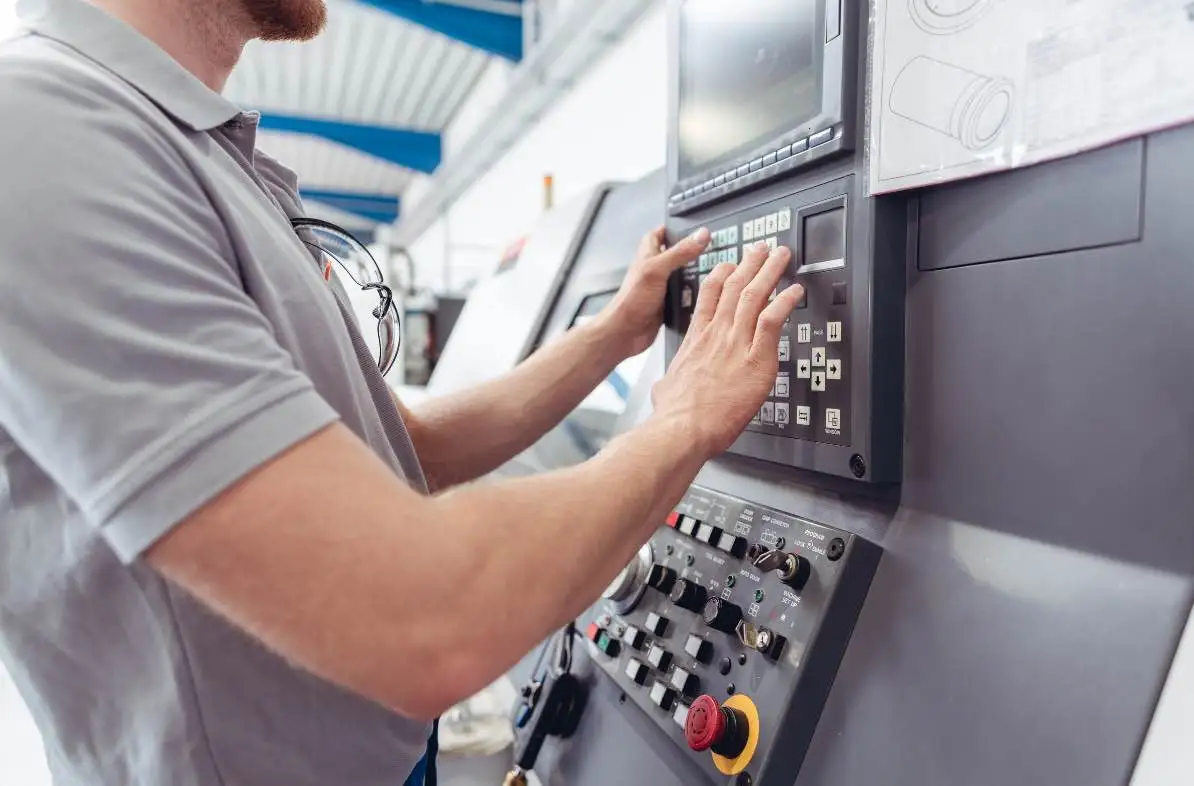Programming a CNC (Computer Numerical Control) machine may seem intimidating, but don’t worry. This guide will take you through each step, making the process clear and straightforward. We will start by understanding the part and then move on to running successful tests. Let’s begin this journey together for a hassle-free experience.
Understand the Part & Machine:
Start learning CNC programming by understanding what you want to create and how your CNC machine operates. This basic knowledge is crucial for making a successful CNC program.
But before we begin,
What is a CNC Machine?
A CNC machine, or Computer Numerical Control, is like a smart conductor in manufacturing. Imagine it as a fancy tool that precisely shapes materials by following clear instructions.

Here’s how to program a CNC Machine:
1. Choose a CAD/CAM Software:
a. CAD Model Creation:
Use Computer-Aided Design (CAD) software to create a 3D model of your part. It’s like shaping things digitally, turning your ideas into a real-looking form.
b. CAM Software Conversion:
After finishing your model, move to Computer-Aided Manufacturing (CAM) software. This tool changes your 3D model into G-code, the language CNC machines get. It’s like turning your design into a language the machine knows.
2. Generate Toolpaths:
In CAM software, set the paths for your CNC machine to follow. Specify how fast it cuts, moves, and changes tools. This part needs a close look at the part shape and how you want to shape it.
“Toolpaths are like the choreography of CNC machining – guiding the machine’s every move for a flawless performance.” — CNC Choreographer
3. G-code Programming:
Check and change the G-code from the CAM software. See how the G-code commands affect the machine work. Pay close attention and know the basics of CNC programming for this step.
4. Tool Selection:
Choose the appropriate cutting tools for each operation. Consider factors such as material type, cutting speed, and tool life. The right tools contribute significantly to the efficiency and quality of the machining process.
“Selecting tools is like picking the right actors for a play – each one plays a crucial role in the production’s success.” — CNC Casting Director
5. Work Coordinate System:
After creating the program, check it in the CAM software’s simulation to catch any potential problems before using the CNC machine for real. This helps prevent mistakes and ensures smoother production.
6. Simulate the Program:
Before you use the CNC machine for real, try the program in the CAM software’s simulation. This helps catch and fix problems, making sure you avoid mistakes when you actually start making things.
7. Post-Processing:
Once you finish the program, use the CAM software to make the final G-code. This G-code has the instructions the CNC machine needs to make the part you want. Be careful with details to avoid mistakes during machining.
8. Transfer the Program:
Send the G-code program to the CNC machine. You can do this using USB, network connection, or other methods depending on your machine and setup.
9. Run a Test:
Before you start making a lot, try the program on scrap material. This makes sure it works right and makes the part accurately. It’s a key double-check before you actually start making things.
Conclusion:
To sum up, programming a CNC machine includes careful steps, like grasping the part and picking software, creating toolpaths, simulating the program, and doing tests. Getting good at CNC programming happens with practice, so try things out and improve your skills. Mastering these steps lets you use CNC tech for accurate and efficient manufacturing.
Do You Need To Compare Different CNC Machines?







I always enjoy learning more about CNC technology. Thanks for sharing such informative content!
I want to learn how to operate and program these machines they fascinate me. I have only operated CNC machines so far.
I’m truly impressed to be working alongside professionals in this field. With the support and resources provided by this platform, I believe we can continue to innovate and make significant discoveries in the world of engineering.
This is the first site that has given programming steps in writing. It makes it so much more understandable. Thanks
Thank you for your kind words! We’re thrilled to hear that you found our programming steps clear and helpful. Your feedback means a lot to us!